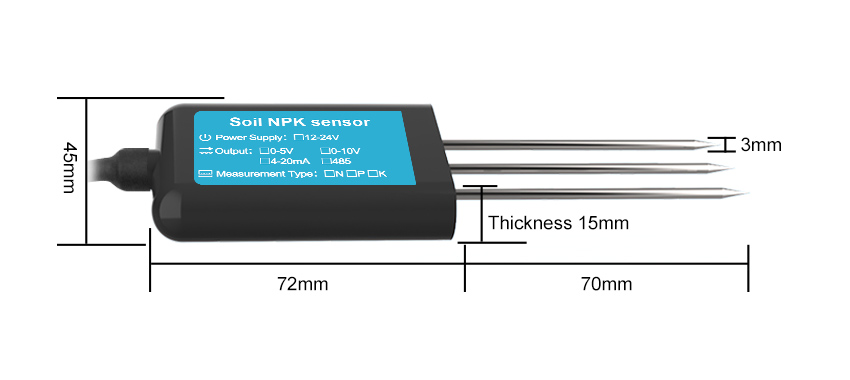In modern agriculture, maximizing crop productivity while minimizing resource use is a key goal. Soil sensors have emerged as powerful tools that provide valuable insights into soil health and conditions. By harnessing data from these sensors, farmers can make informed decisions to optimize crop growth, improve resource efficiency, and enhance overall productivity. This article explores the benefits of using soil sensors in agriculture and how they can be utilized to achieve higher crop yields.
Understanding Soil Health:
Soil health plays a vital role in determining crop productivity. Factors such as nutrient availability, moisture content, pH levels, and compaction greatly impact plant growth and development. Traditionally, farmers relied on manual soil sampling and laboratory analysis to assess these parameters, which was time-consuming and provided limited information.
The Role of Soil Sensors:
Soil sensors, also known as soil monitoring systems or probes, offer a real-time and detailed understanding of soil conditions. These sensors are inserted at different depths into the soil and measure specific characteristics, including:

a) Moisture Sensors: These sensors measure the soil's water content, helping farmers determine when and how much to irrigate. This allows for precise irrigation management, preventing under or over-watering, which can negatively impact crop growth.
b) Nutrient Sensors: Nutrient levels in the soil directly influence plant growth. Soil sensors can detect the concentration of nutrients such as nitrogen, phosphorus, and potassium, enabling farmers to apply fertilizers judiciously. This prevents wastage and reduces environmental pollution caused by excessive fertilizer use.
c) pH Sensors: Soil pH affects nutrient availability to plants. Sensors that measure pH levels help farmers maintain optimal soil acidity or alkalinity, ensuring that essential nutrients are readily available for plant uptake. This leads to improved crop vigor and productivity.
d) Temperature Sensors: Soil temperature impacts seed germination, root development, and nutrient absorption. By monitoring soil temperature, farmers can make informed decisions about planting times and adjust their management practices accordingly.
e) Compaction Sensors: Soil compaction impedes root growth and nutrient uptake. Sensors that measure soil compaction help identify areas where remedial actions, such as deep tillage or soil aeration, are required. This improves soil structure, allowing roots to penetrate more easily and enhancing crop growth.
Benefits of Soil Sensors in Enhancing Crop Productivity: The use of soil sensors provides several advantages for optimizing crop productivity:
a) Precision Agriculture: Soil sensors enable farmers to practice precision agriculture, tailoring their actions based on real-time soil data. This allows for precise application of water, fertilizers, and other inputs, resulting in improved resource efficiency and higher crop yields.
b) Water Management: By monitoring soil moisture levels, farmers can optimize irrigation practices, ensuring crops receive the right amount of water at the right time. This reduces water wastage, conserves water resources, and improves crop water-use efficiency.
c) Nutrient Management: Soil sensors provide accurate information about nutrient levels, guiding farmers in applying fertilizers effectively. Optimizing nutrient application prevents nutrient imbalances, reduces environmental pollution, and promotes healthy plant growth.
d) Disease and Pest Management: Soil sensors can aid in early detection of soil-borne diseases and pests. By identifying conditions favorable for disease development or pest infestations, farmers can take proactive measures to prevent crop damage. This reduces the reliance on chemical pesticides and minimizes yield losses.
e) Improved Planning and Decision-Making: Soil sensor data, combined with weather forecasts and crop models, helps farmers make informed decisions regarding planting schedules, crop selection, and yield predictions. This optimizes resource allocation and increases overall farm profitability.
f) Sustainable Soil Management: Soil sensors facilitate better soil resource management. By monitoring soil compaction, organic matter content, and other factors, farmers can implement soil conservation practices such as cover cropping and reduced tillage. This improves soil health, promotes biodiversity, and enhances the long-term sustainability of farming systems.
Future Developments and Challenges: While soil sensors hold great potential for enhancing crop productivity, certain challenges need to be addressed:
a) Cost: The initial investment in soil sensor technology may be a barrier for some farmers, particularly small-scale producers. However, increased adoption and technological advancements are expected to reduce costs over time, making it more accessible to all farmers.
b) Data Interpretation: Analyzing and interpretin





